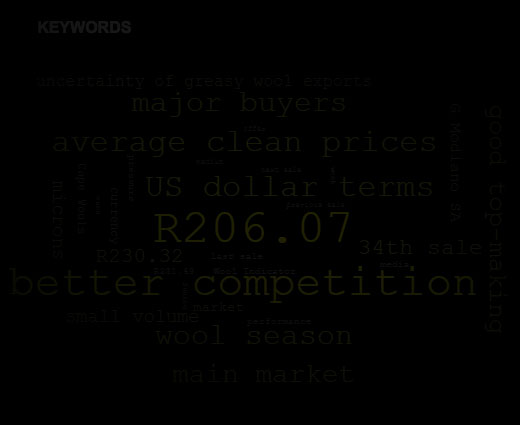
A new report on the world outlook for hygiene absorbent products and the key raw materials used in them suggests the global consumption of this product group grew to over 540 billion units in 2014.
The report also finds that, due to rapid market penetration and growth over the last several years, China is now the largest volume market for hygiene absorbent products, including disposable diapers, training pants, feminine hygiene and adult incontinence.
Published in February by Price Hanna Consultants – a firm specialising in the analysis of this area and related markets – the report looks at prospects for absorbent products in key countries and regions as well as the key materials used, namely nonwovens, fluff pulp, airlaid cores, superabsorbents and hygiene films.
Price Hanna published the last such global hygiene report in 2013 and this latest version details market estimates for 2013 and 2014, and projections for 2019, for the key markets of North America, Western Europe, the Pacific Rim, Central and South America, the Middle East, Central and Eastern Europe, China, India, Africa and The Rest of Central Asia.
Growth opportunities for manufacturers and suppliers are particularly strong in the emerging markets. The report finds volume here is overtaking that in the established markets of North America, Western Europe and Japan. While growth rates for the next five years in the undeveloped and developing markets of Asia, South and Central America, and Eastern Europe are predicted to continue to exceed the global average growth of the industry.
Political instability
Report author Pricie Hanna says particularly interesting findings in the report shine a spotlight on wider economic, demographic and political trends. “We are providing a finger on the pulse of some very interesting economic and political international and regional changes,” Ms Hanna says.
“We start with economics, political stability and demographics when we do these studies. And sadly some of the political and stability issues have been some of the most dramatic.”
The situation in the Middle East is a good example. “Sadly for the Middle East we have taken down estimates, because some major markets there are no longer normal markets, Syria for example, which is a tragedy, and Iraq – and that has also affected North Africa a little bit, too.”
Ms Hanna says the Middle East and Africa have great potential in absorbent hygiene markets but they have been set back by the political instability there.
Looking specifically at absorbent hygiene products, one finding in the report which remains predictable is the upward growth trajectory. “When people start using hygiene products they don’t usually stop, unless they are literally refugees, Ms Hanna says. “If they are squeezed financially they may downgrade – or not upgrade their preferences, but they won’t stop.”
Looking at consumer trends specifically in emerging markets, she says product design has moved squarely into premium ranges now. “We have also seen major changes in healthcare, and more countries are using these products in healthcare systems than previously,” she adds.
Adult incontinence
Adult incontinence products too, show some interesting developments since the last report. “We have seen success of Unicharm in some of Asia’s emerging markets into diaper pants, at an affordable level, where most of the world had considered it to be a relatively premium product.”
And the growth of adult incontinence pull ups has taken over much of the adult slips/briefs market, she says. “Adult incontinence and pull up pants for adults have become very popular for mobile adults, living at home and even in long term care settings. These are being used more, in place of traditional adult incontinence products, because if a person is able to use pull ups it’s much better to change them yourself.
“A couple of years ago we thought the adult pant would be entirely a consumer product but that is no longer true, we are seeing institutional use too.”
Meanwhile, trends in China are all towards premiumisation, she says. “China’s middle class have good consumer income now and are intent on the highest quality; they like it to be associated with Western and Japanese standards and we see some of the highest standards in the world now in China.
Aesthetics are also increasingly key in China, she says, with very soft and relatively expensive nonwovens being used in products. For example, Kimberly-Clark has been successful in gaining share in China by putting into their new plant a very premium design production line. Unicharm and Kao are doing the same.
In terms of materials trends, Ms Hanna says softness and ultra-softness is still key, “really silky top sheets, as well as better stretch and more body hugging – which not only improves appearance for under clothing, but it’s also better for anti-leaking, which is improved with these elasticated materials”.
And trends that have been around a long time but still going strong are the shift towards ultra-thin and higher performance acquisition distribution layers – providing continued opportunities for nonwovens specifically designed for superabsorbent cores.
‘Global outlook for hygiene absorbent products and key raw materials in 2013, 2014 and 2019’ is available to purchase from Price Hanna Consultants, email mscannapieco@pricehanna.com
RELATED ARTICLES
-
Acme Mills Partners with Vietnam Producers
- Acme Mills
- WTiN
-
European nonwoven production grows
- EDANA
- WTiN
-
Avgol inaugurates new line in North Carolina
- Indorama Ventures Public Company Limited
- WTiN
-
News Release
Technical Absorbents returns to VIATT
-
News Release
Nordifa acquires Sporda Nonwoven








